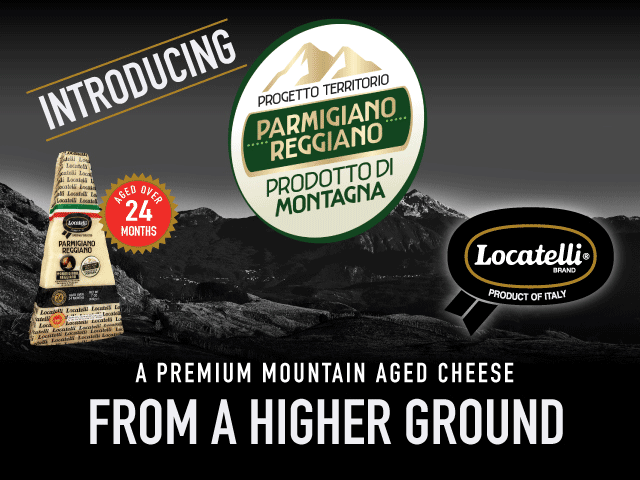Capitalizing on Charcuterie
October 9, 2025 | 8 min to read
Supermarket delis are redefining charcuterie as a versatile, everyday category driven by innovation, with cured meats, cheeses, portable snack trays, plant-based alternatives, and globally inspired flavors. Retailers and makers emphasize clean-label ingredients, convenience packs, cross-merchandising with wine and nuts, and experiential tactics like sampling and pairing guidance. AI kiosks like Cicero further personalize board building, boosting basket size, discovery, and appeal to younger shoppers.

Supermarket delis can create cross-merchandising opportunities with a wide range of items.
As the charcuterie category continues to evolve, supermarket delis are on the front line as the provider of the board’s main components.
“The beauty of this category is its constant innovation — new flavor profiles, textures, and pairings that elevate the Italian tradition of tagliere that most Americans know as charcuterie,” says Emilio Mignucci, owner and expert cheesemonger, Di Bruno Brothers, Philadelphia, PA.
Charcuterie is defined as a curated selection of premium, ready-to-eat items designed for easy snacking and entertaining.
“Categories within charcuterie include a variety of cured meats, cheeses, crackers and complementary items, such as nuts, olives, spreads or dried fruits — ingredients that consumers can customize and assemble themselves for a personal snack or for entertaining all in one place,” says Claire Donohue, marketing manager, Volpi Foods, St. Louis, MO.
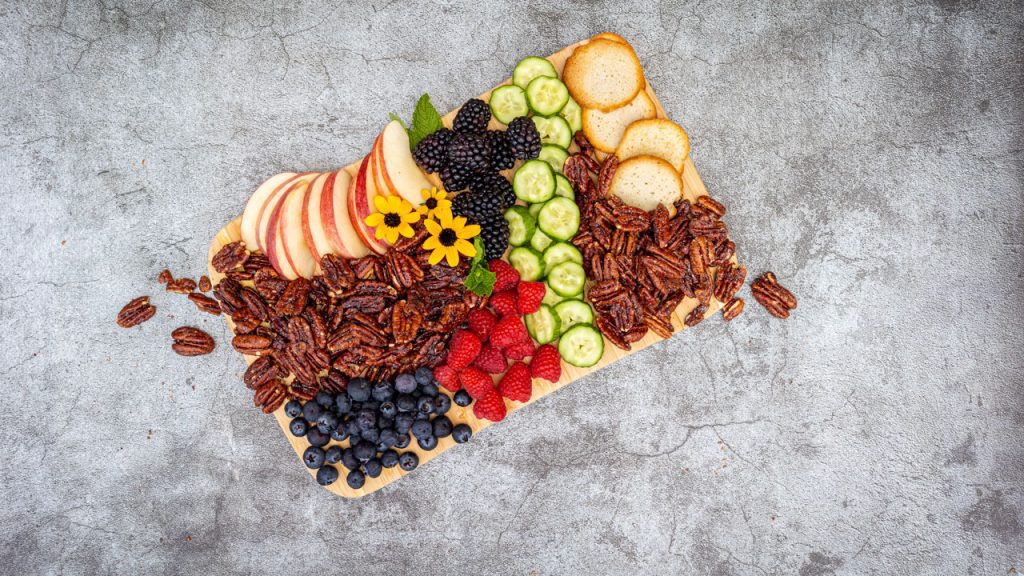
In supermarket delis, charcuterie meats typically include salami, prosciutto, pepperoni and soppressata, as well as sliced deli meats, like turkey, ham and roast beef. It also encompasses an array of cheeses, from sharp cheddars to creamy bries.
“Rooted in the traditional French practice of preserving and utilizing meat to extend its shelf life, charcuterie began as a method of making perishable proteins both edible and flavorful,” says Lauren Eni Canseco, chief marketing officer, Dietz & Watson, Philadelphia. “While originally centered on expertly prepared meats, its definition has expanded, especially in American retailers, to include a wide range of artisanal accompaniments.”
Charcuterie boards are reflecting consumers’ changing preferences, with clean-label and minimally processed products that are free of artificial ingredients, preservatives and nitrates. These boards are also becoming more internationally focused. Shoppers are seeking out new textures, formats and flavor profiles.
There’s also increasing demand for plant-based options that mimic the richness of traditional charcuterie using vegetables, legumes and oils. In addition, there has been an increase in pre-packaged mini charcuterie boards and smaller snack trays that focus on convenience and easy snacking.
Charcuterie, in the traditional sense, refers to any cooked, cured or smoked meat — including whole-muscle hams, sausages, pâtés, terrines and more.
“In the supermarket deli context, the charcuterie term has taken on a narrower meaning,” says Jesse Denes, vice president, Schaller & Weber, New York City, NY. “What’s often labeled and merchandised as ‘charcuterie’ tends to focus on sliced cured meats, dry sausages, pâtés and other board-friendly specialties. Meanwhile, classic charcuterie items, like deli hams, bolognas and liverwursts are typically found in their own sections — even though they belong to the same culinary lineage.”
NEW DEVELOPMENTS
Manufacturers offer a wide range of options in the charcuterie space.
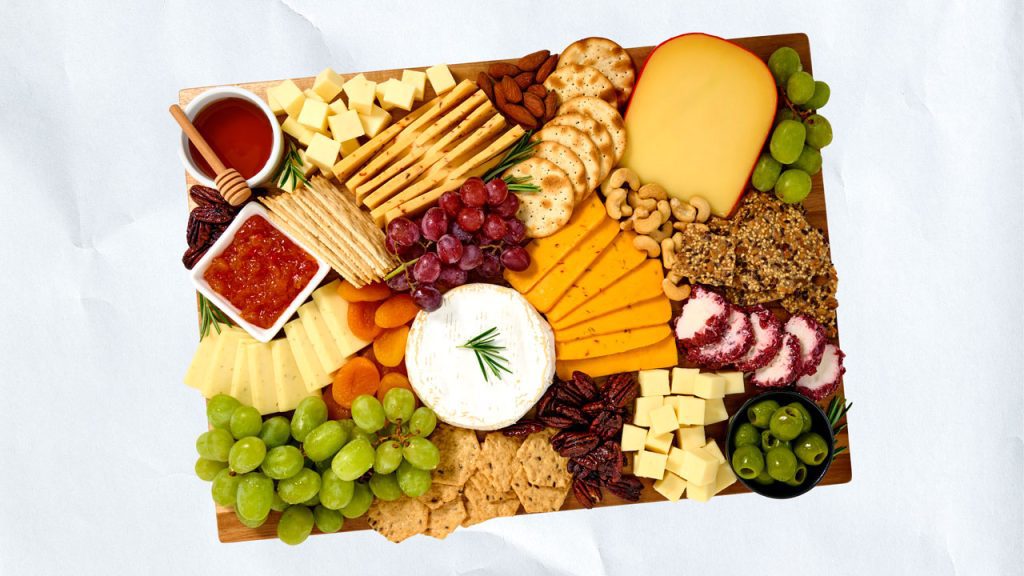
In addition to cheese spreads, jams, glazes, white truffle honey, tapenade, roasted and stuffed peppers, artisanal crostini, and oven-baked grissini, Di Bruno Brothers offers a line of five cured salami chubs, ranging from spicy to mild, and is also rolling out pre-sliced, diced, and combo packs of cured meats, including prosciutto, pancetta and soppressata.
“We take a ‘glocal’ approach — global inspiration and local integrity — as we source many of our ingredients from small family businesses and food makers in Italy,” says Mignucci.
“While ready-made boards offer convenience, encouraging customers to build their own board makes the experience more engaging and memorable.”
— Emilio Mignucci, Di Bruno Brothers, Philadelphia, PAJay Whitney, co-founder and chief marketing officer, FoodStory Brands, Phoenix, AZ, which owns Upper Cut, is also taking a global approach to attract new, younger consumers. “We are introducing a line of multi-compartment, globally inspired snack trays this fall to take consumers on a flavor adventure … literally. It brings a fresh twist to deli snacking and charcuterie that will broaden the usage occasion and attract Gen Z consumers.”
In 2025, Volpi introduced portioned and protein-packed Snack Trays and a Charcuterie Board.
“Our latest product innovations cater to the portable, ready-to-eat space — Snack Trays that are offered in two flavors — mozzarella and Genoa Salame and prosciutto and provolone — and a Charcuterie Board that comes with Genoa Salame, uncured pepperoni, crackers, provolone cheese, roasted almonds and organic cranberries,” says Donohue.
Dietz & Watson has expanded its offerings to include its Originals line with organic and antibiotic-free meats and cheeses with no artificial preservatives or additives.
“We’ve also introduced new snack packs that pair premium meats, cheeses and crackers in ready-to-eat portions,” says Eni Canseco. “On the flavor front, we’re offering a variety of cheeses and deli meats in exciting new profiles.”
Schaller & Weber continues expanding specialty offerings with items like Iberico pork pâté, foie gras with black truffle and a spreadable ’nduja.
“For customers looking for plant-based options, we’ve developed a line of shelf-stable vegan pâtés made with vegetables and natural oils,” says Denes.
Oceanside, CA-based Olli Salumeria is capitalizing on growth from snack packs with meat, cheese and cracker varieties.
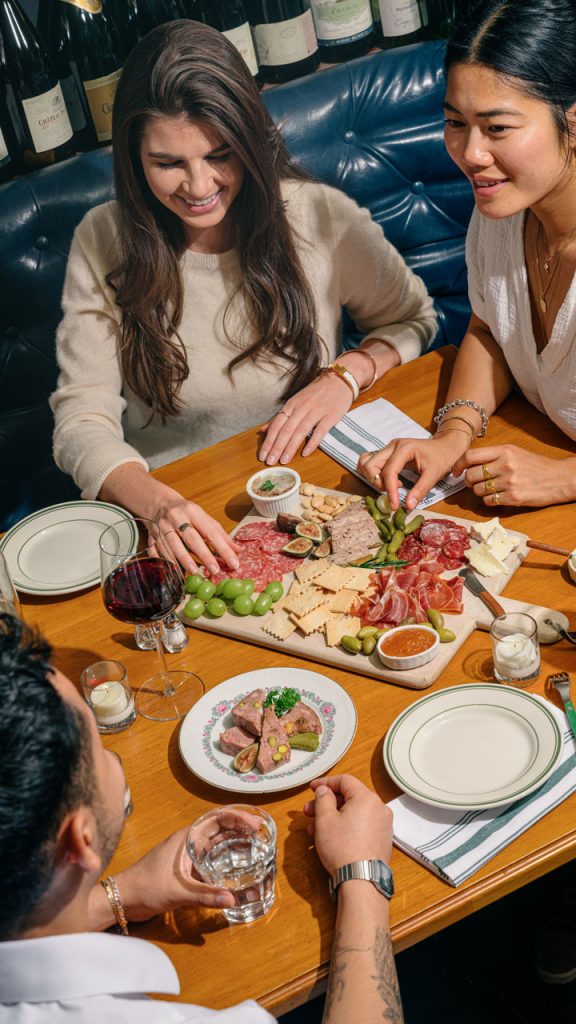
“We have many flavors, including chipotle and habanero, and are looking to bring new flavors to the charcuterie set,” says Enrico Porrino, Olli’s vice president of research and development and a master salumiere. “We’ve added about 10 Latino and South American flavors, in addition to fusion varieties.”
At Fabrique Delices, Hayward, CA, the focus is on French and Basque regional products.
“We are now offering a new precooked ham for delis,” says Sebastien Espinasse, president of the company. “It is made the traditional way and is a very flavorful option for charcuterie boards.”
“While ready-made boards offer convenience, encouraging customers to build their own board makes the experience more engaging and memorable.”
— Emilio Mignucci, Di Bruno Brothers, Philadelphia, PA
Fortune Favors, Cottage Grove, WI, offers a half dozen candied pecan flavors as a pairing option for charcuterie boards.
“These are designed to work with meats and cheeses to spice up the board,” says Sam McDaniel, Fortune Favors’ chief executive. “Nuts are typically an afterthought, but really should be an equal partner as they add the crunch and can stand up to other flavors. They also add a visual component.”
The company’s two latest flavors are Mesquite, a barbecue flavor that pairs well with smoked meats, and Spark, a blend of warming chili spice, smokiness and citrus with a rich, gochugaru-inspired flavor.
MARKETING & MERCHANDISING
Success in the charcuterie space is dependent on product presentation.
“Supermarket delis can really capitalize on this by making charcuterie feel approachable, convenient and inspiring,” says Volpi Foods’ Donohue. “Grouping complementary items — like cured meats, cheeses, olives and spreads — together makes it easier for shoppers to visualize and get creative when building their own boards. Cross merchandising with wine, nuts and dried fruits, or crackers in adjacent aisles, can also definitely help spark buys.”
In addition, she adds that sampling and signage also go a long way, as well as educational elements, like pairing suggestions or build-your-own board ideas.
“The most effective strategy is to merchandise with intent: bundling complementary products, like meats, cheeses and condiments, encourages the customer to build a full board in one trip,” says Denes at Schaller & Weber. “Creating a charcuterie destination within the deli — even a small one — makes discovery easier. And don’t underestimate the power of eye-level placement, especially for grab-and-go packs or entertaining bundles.”
Eni Canseco at Dietz & Watson recommends highlighting product attributes like “clean label,” “no nitrates” or “snack-ready” with shelf talkers or QR codes. Also, seasonal themes, rotating bundles and in-store tastings are effective strategies.
Di Bruno Brothers’ website and packaging offers pairing suggestions for charcuterie boards.
“Collaborating with other departments for seasonal features or themed promotions — like summer barbecues, holiday entertaining or back-to-school lunchboxes — helps position charcuterie as an easy to prep everyday indulgence, not just a special-occasion splurge,” says Mignucci.
LOOKING AHEAD
The future of the category lies in flexibility and flavor, with pre-portioned items, globally inspired profiles and better-for-you ingredients made without additives or GMOs, according to Mignucci.
“We are tapping into this momentum by rotating in limited-time items, offering sampling opportunities and using signage and displays to share pairing ideas, turning charcuterie into an engaging, flavorful experience,” he says.
Charcuterie is shifting from a special-occasion indulgence to a mainstream, everyday eating experience.
“As interest grows in creative food experiences and curated presentation, charcuterie is well-positioned to remain a top choice for both casual and elevated occasions,” says Eni Canseco at Dietz & Watson.
Upper Cut’s Whitney says the continued growth and interest in charcuterie serves to reinforce how much consumers crave a curated food experience and how much they love to express themselves through personalized creations. “The canvas, if you will, is quite limitless, and we love the proliferation of new flavors and formats we’ve seen in the category to give consumers more optionality.”
• • •
AI-Powered Kiosks Elevate the Deli Experience
To help guide consumers seeking charcuterie board ideas, retailers are turning to AI, like Cicero, an in-store digital kiosk that acts as a virtual charcuterie board expert. Positioned near the deli or specialty cheese case, Cicero guides shoppers through building the perfect board based on their preferences — occasion, budget, dietary needs or wine pairings.
“Using real-time inventory data from the store, Cicero instantly recommends curated selections of cheeses, meats, fruits, crackers and accompaniments — all available on-site,” says Doug Stephen, president of CGS Immersive, New York City, NY. “Customers can print a shopping list or, in some stores, design their board from home via a connected app and pick it up at the store.”
The results are bigger baskets, cross-category sales, labor efficiency, younger shopper appeal and actionable data from kiosk interactions.
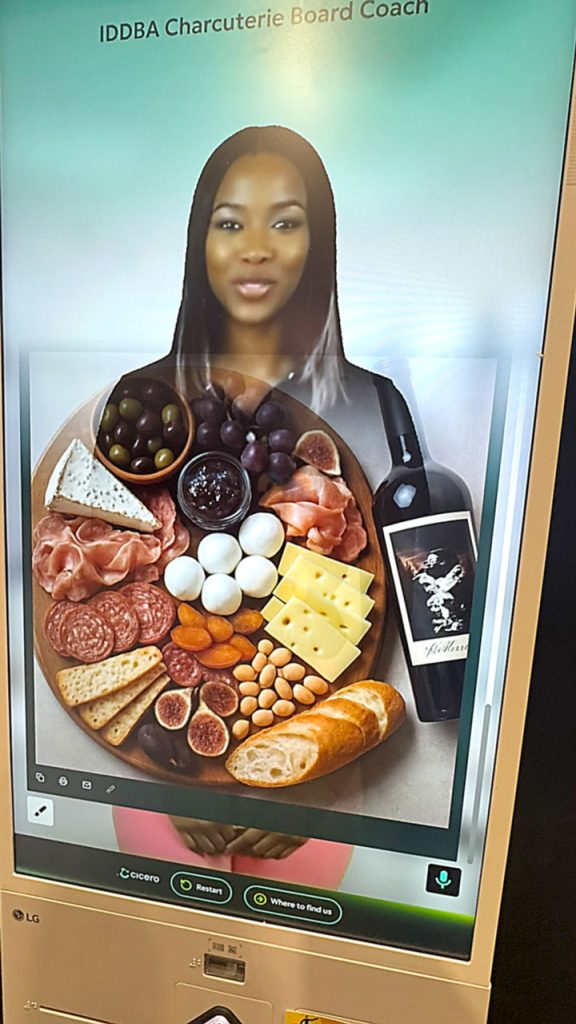
“Surveys show that 58% of shoppers struggle with flavor pairings, nearly half feel intimidated arranging boards visually, and 27% need help meeting dietary needs,” Stephen notes. “AI kiosks meet all these challenges head-on — transforming confusion into confident, high-margin purchases.”
6 of 7 article in DeliBusiness Fall 2025

